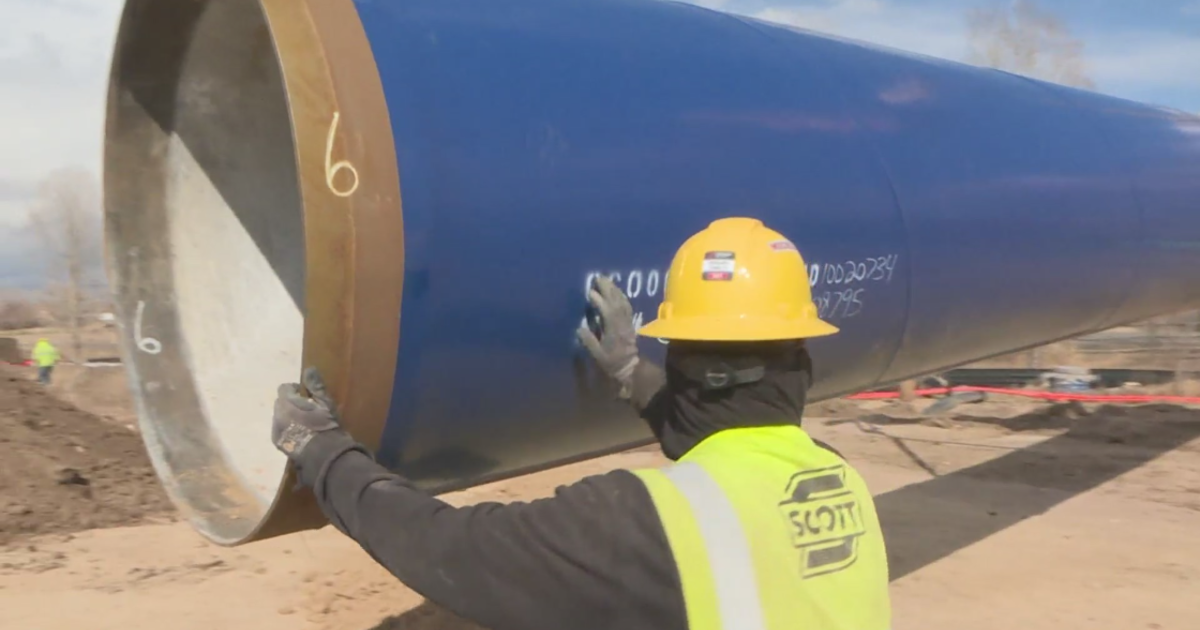Elevated Levels Of 'Forever Chemicals' Found In Some Colorado Drinking Water Districts
(CBS4) - Poisonous "forever chemicals" have been found at levels higher than what some states say are safe in more than a dozen Colorado water districts. This, after massive statewide testing for the pollutants was conducted during the pandemic.
The technical term for forever chemicals is PFAS, which stands for perfluoroalkyl substances, and they're referred to as "forever chemicals," because one they're in the body, they don't leave, and instead build up over time. According to the EPA, "exposure to PFAS can lead to adverse health outcomes in humans."
The EPA says two types of PFAS chemicals, PFOA and PFOS, can cause cancer, birth defects, and thyroid hormone disruption.
PFAS can be found in a variety of common products, like clothing, cookware, and furniture. Pollution of those products can then lead to contamination of the water supply.
While the EPA has no legal limit for PFAS in drinking water, it recommends the level not be any higher than 70 parts per trillion for PFOA and PFOS. But eight states say that's not good enough, setting more stringent legal limits. Like Massachusetts, which has a PFAS maximum of only 20 parts per trillion for six PFAS chemicals, including PFOA, PFOS, PFHxS, PFNA, PFHpA, and PFDA. See the levels of those six chemicals found in your district, by clicking here.
In Colorado, the state health department just tested 400 water districts for the very first time, touting it found no water systems had levels above the EPA's guidelines.
But CBS4 Investigates dug through the findings, learning 13 water systems have levels above the 20 parts per trillion limit Massachusetts recently set.
Those districts include Arapahoe County WWWA, with a level of 23 parts per trillion for the six PFAS chemicals regulated under Massachusetts, Forest Hills Riva Chase Water in the foothills at 26.4 parts per trillion, and Frisco Water with a level of 58.5 parts per trillion at one entry point tested.
CBS4 Investigates reached out to those water systems, and so far has only heard back from Frisco, which said of the results, "the EPA's health advisory specifically applies to PFOA and PFOS compounds, two compounds out of the 18 PFAS compounds tested for in drinking water. Frisco's water did not test above the maximum contaminant level for the two chemical compounds in the Per- and Polyfluoroalkyl substances (PFAS) family, PFOA and PFOS, which the EPA has established guidance for at this point."
As far as next steps said, a spokesperson for Frisco said, "even though Frisco's PFOA and PFOS levels were well below the maximum set by the advisory, the Town of Frisco will be partnering with the EPA and the CDPHE to further evaluate PFAS levels and increase frequency of testing to see if they change over time. The Town of Frisco will also test PFAS levels in the blended water at various locations in the water distribution system to determine actual concentration levels at the tap, which are likely to be lower. The Town of Frisco will continue to closely follow this evolving scientific knowledge around PFAS provided by the EPA and CDPHE in order to continue to provide safe and delicious drinking water to Frisco residents and visitors."
Further analysis of the testing data shows three Colorado water systems would be above the legal limit Michigan recently set at 8 parts per trillion for PFOA. Seven other districts had levels that would trigger further testing in Michigan, due to being just under the level of 8 parts per trillion for PFOA.
CBS4 Investigates questioned John Putnam, the former director of environmental programs for the Colorado Department of Public Health and Environment, about the findings.
Asked whether he thought residents in those water districts with elevated levels should be concerned, Putnam said, "at this point we don't believe they should be concerned."
"The science indicates that the 70 parts per trillion for the two chemicals included in that (EPA) health advisory provides a level below which we wouldn't expect health effects," Putnam explained. "We do know that some other states have looked at creating an even broader margin of safety. In order for us to look at doing that we have to collect the sort of information that we're collecting now to evaluate that in the future. So we're glad to be able to be added to get this data and continue reviewing the rapidly evolving science on this issue. So we can continue to protect the safety of drinking water across Colorado."
Putnam led the effort to test the 400 water districts after the state legislature appropriated funds for his agency to do so in spring 2020, he now works for the U.S. Department of Transportation.
"If people are still concerned, they can look at options for themselves, they can look at bottled water for example, or reverse osmosis systems for their own home," Putnam said.
Putnam also explained the legislature appropriated some funding to assist with any mitigation efforts that might be necessary.
"We received some funding from the legislature net last year to provide a take back program to provide resources to some of the districts to help them reduce the chemicals in their drinking water," Putnam said. "And we're going to want to take all of those steps to reduce the chain or break the chain of exposure between this chemical and people's health."
PFAS is not a new issue for many people in Colorado Springs. More than a hundred people there are suing several chemical companies after they claim their water was contaminated by PFAS in fire fighting foam used nearby.
"I felt betrayed, I felt frustration, irritation," said Chris Graham, one of the plaintiffs in the suit.
Graham has lived in his home in Colorado Springs since 2005. The veteran believes his water has poisoned him over the years, causing him to have thyroid issues that have become so severe, he had to quit work.
"It does weigh on you, it weighs on your mind," Graham said. "How would it not?"
His lawyer, David McDivitt, says the lawsuit is part of a nationwide class-action suit against the harmful chemicals.
"This is one of the most significant environmental litigations that has taken place in the last several decades, it's significant because thousands of people around the country have been impacted by chemicals that have seeped into their water supply system from foam that was used by the U.S. military to help put out fires, and the chemicals were put into this foam decades and decades ago," McDivitt said.
McDivitt and Graham believe Colorado should look at passing more stringent laws to further regulate PFAS levels in drinking water across the state.
"I think it's very prudent for states to take a hard look at what's an appropriate level," McDivitt said. "I think the lower the better, because no exposure is healthy."
"Zero would be the absolute best," Graham said. "So that way, there is no more guesswork."




